What I’ve Learned in My 15 Years in Higher Education
by Cristóbal (Chris) Garcia, Staff Fellow for Hispanic Serving Institution Initiatives, University of Northern Colorado
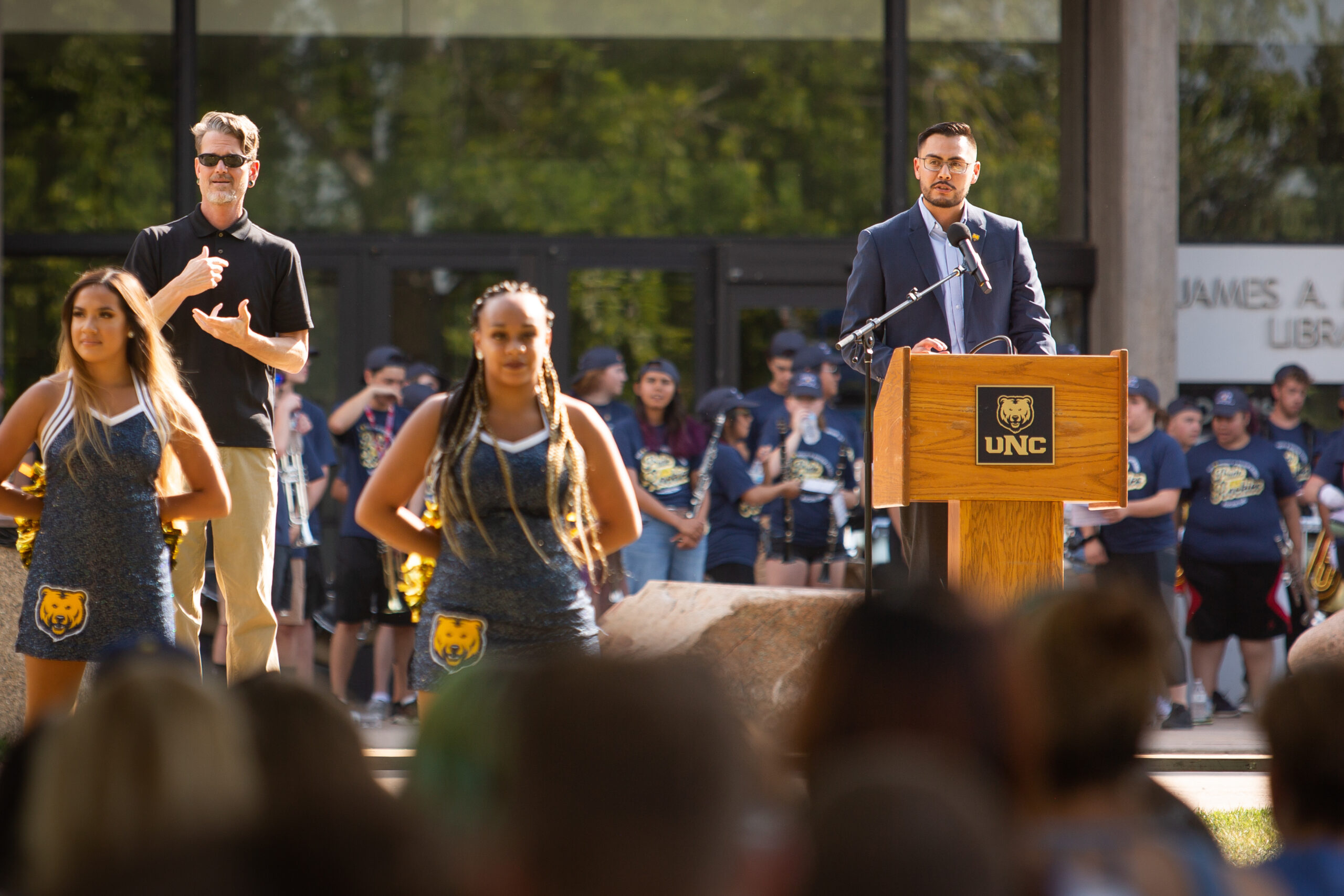
Nearly 1,000 U.S. colleges and universities are designated as current or emerging Hispanic-Serving Institutions (HSI). With 31% of the Latino population under the age of 18 and Latino enrollment in higher education surpassing the growth rate of any other ethnic identity or racial group, institutions of higher learning across the U.S. are preparing for future enrollment that is increasingly Latino.
However, even for schools at the forefront of serving Latino students, we continue to see gaps in retention and graduation rates between Latino students and their white counterparts. For Latino students, this can mean more time in college, more educational debt, a longer wait to launch a career, and less economic opportunity throughout their lifetime.
I have spent nearly 15 years working in higher education; I currently co-lead HSI Initiatives at the University of Northern Colorado (UNC) and serve as a member of Colorado’s statewide HSI Consortium. I am proudly Mexican-American, have lived on both sides of the U.S.–Mexico border, and have had the privilege of growing up both bilingual and bicultural.
For me, and so many Latinos in the U.S., education is a pathway to possibility. As leaders in higher education, we share the opportunity and responsibility to better serve the students and families who are enrolling and investing in our institutions.
To truly serve Latino students in our spaces of higher learning, let’s consider that student “success” is not simply because of a student’s academic experience; It also includes an enriching experience that integrates their cultural identity and social well-being.
Below, I have identified five focus areas to better serve Latino-identifying students on higher education campuses.
Addressing Implicit Bias in Higher Education
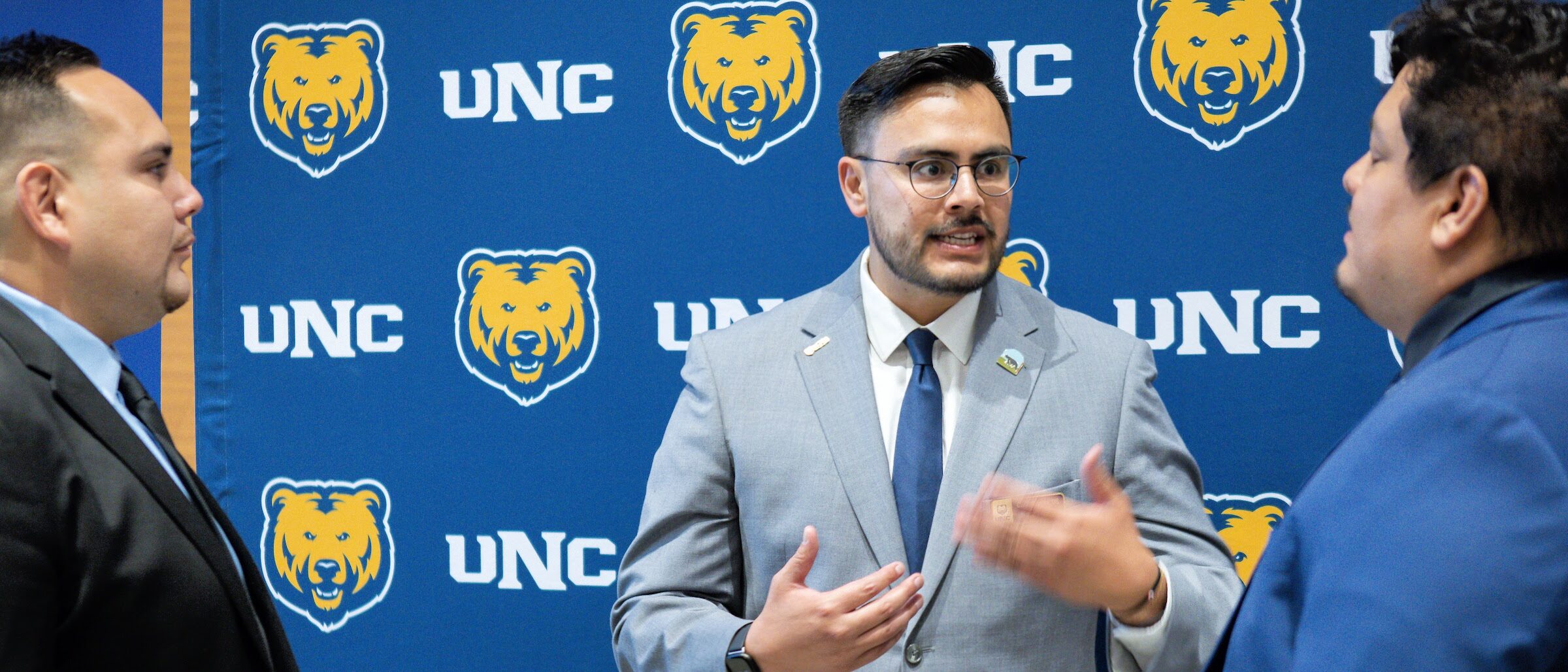
In my experience, as staff and faculty at colleges and universities begin to ask the question of how to better serve students who have not traditionally had access to higher education, they may come across entrenched experiences of implicit bias in their campus and local communities.
In November 2020, our HSI working group conducted a series of interviews as part of UNC’s strategic plan to become a designated HSI by 2025. In these instances, we heard faculty and alumni say things like:
“Does this mean I have to lessen the academic rigor in my classes?”
“This isn’t the school that I remember.”
“Will we lose our accreditation?”
Embedded in these questions and comments is an implicit bias that becoming an HSI and better serving Latino students would decrease the academic effectiveness of the institution as a whole. This unconscious bias often leads to discrimination against people of color, including Latino students, faculty, and staff. Therefore, it is crucial for our campus communities to proactively address this issue through professional development on implicit bias, asset-based language, combating anti-racist and anti-black discrimination, and diversity, equity, and inclusion.
In addition to anti-bias training, I encourage campuses to take a step further and highlight the power of biculturalism and bilingualism many Latino students and other students of color bring to their university communities.
Read more: The Cognitive Benefits of Being Bilingual
Bridging the Communication Gap and Improving Storytelling
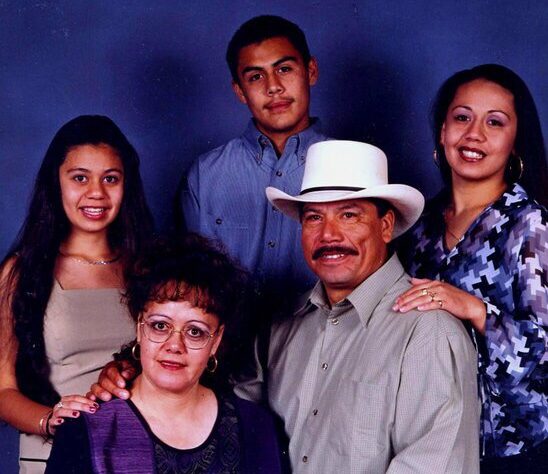
At UNC, we recognize that we aren’t just serving students but their entire families. Simply translating campus documents into Spanish is not enough; we must tell our story to students and their families in the language they identify best with and through the messaging they best connect with.
By highlighting key points about the college experience, institutions of higher education can:
Better inform prospective students and their families about the topics they truly care about — like the quality of educational programs and campus culture
Create a better frame of reference for the college experience — especially for students who are the first in their families to attend college
Contextualize college costs and financial aid processes — acknowledging that college is both an investment of time and financial resources
Highlight the tangible benefits of college — finding a community on campus, the return on investment of a college degree, career advancement opportunities, and the strength of an alumni network
This messaging is important for Latino and first-generation families as they decide to invest in a college education or prepare for their children to move away from home with the promise of a better life.
My parents always told me, “No queremos que trabajes tan duro como nosotros / We don’t want you to work as hard as we do.” And for them, the pathway to a more fulfilled life was a solid education. In my experience, they were right.
Highlighting Latino Identity and Excellence in Creative Ways

Above is “Centro de Educación de Aztlan” created by Mexican/Chicana artist and UNC alumna Brenda Vargas-Gonzalez and muralist Leo Tanguma
College is a time for students to explore their various identities and find their voices in advocacy and action. This reflection is often stimulated by creating accessible and culturally reflective spaces on college campuses.
On an annual basis, UNC professor Dr. Jonathan Alcántar curates exhibits and programming and invites world-renowned Latino-identifying artists to our campus. In 2022, he launched several arts initiatives, including the Latinx Film Festival, in collaboration with UNC’s College of Performing and Visual Arts. He invited alumna Brenda Vargas-Gonzalez and muralist Leo Tanguma to transform an existing academic space into a culturally reflective study area they renamed “El Centro de Educación de Aztlan.”
Higher education institutions can continue supporting this reflection and exploration by hosting activities, reframing academic spaces, and encouraging the formation of Latino-centered student organizations that celebrate their culture and heritage.
Through these experiences, Latino students can connect with fellow university and local community members and learn more about themselves and their culture.
Promoting Unique Programming Tied to Latino Customs and Culture
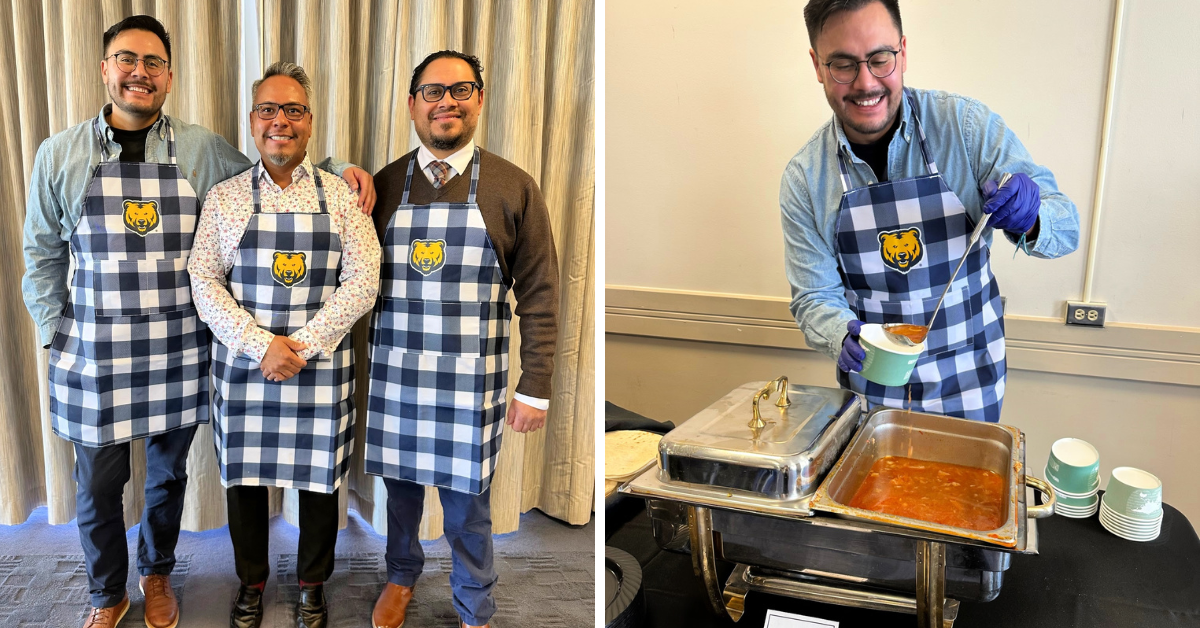
This past academic year, UNC’s HSI leadership committed themselves to offering unique social and cultural programming to help Latino students feel more connected to their heritage while finding a sense of belonging on our campus.
Events included:
A Latinx-themed Football Tailgate and Game that brought together Latino-owned businesses, including food trucks, Spanish-language radio, and local Latino-identifying community members and high school students
Inviting the Colorado Department of Higher Education to campus to celebrate UNC as Colorado’s Next Hispanic Serving Institution
Serving pozole to 500+ students, faculty, and staff
Celebrating our more than 330 Latino-identifying graduates at our LatinXcellence Graduation Reception
One of my biggest takeaways from these programs was how involved our largely-Latino-identifying facilities and dining staff wanted to be: asking questions, connecting with students and families, and offering to help make pozole or other traditionally Mexican or Latino dishes at upcoming events – a role they don’t regularly get to play in their positions on campus.
These events help build connections among our Latino students and encourage the larger UNC community to learn more about local Latino heritage, culture, and food. They also learn why it’s so important for our events and programs to reflect our student body.
Providing Academic Support Through an Asset-Based Lens
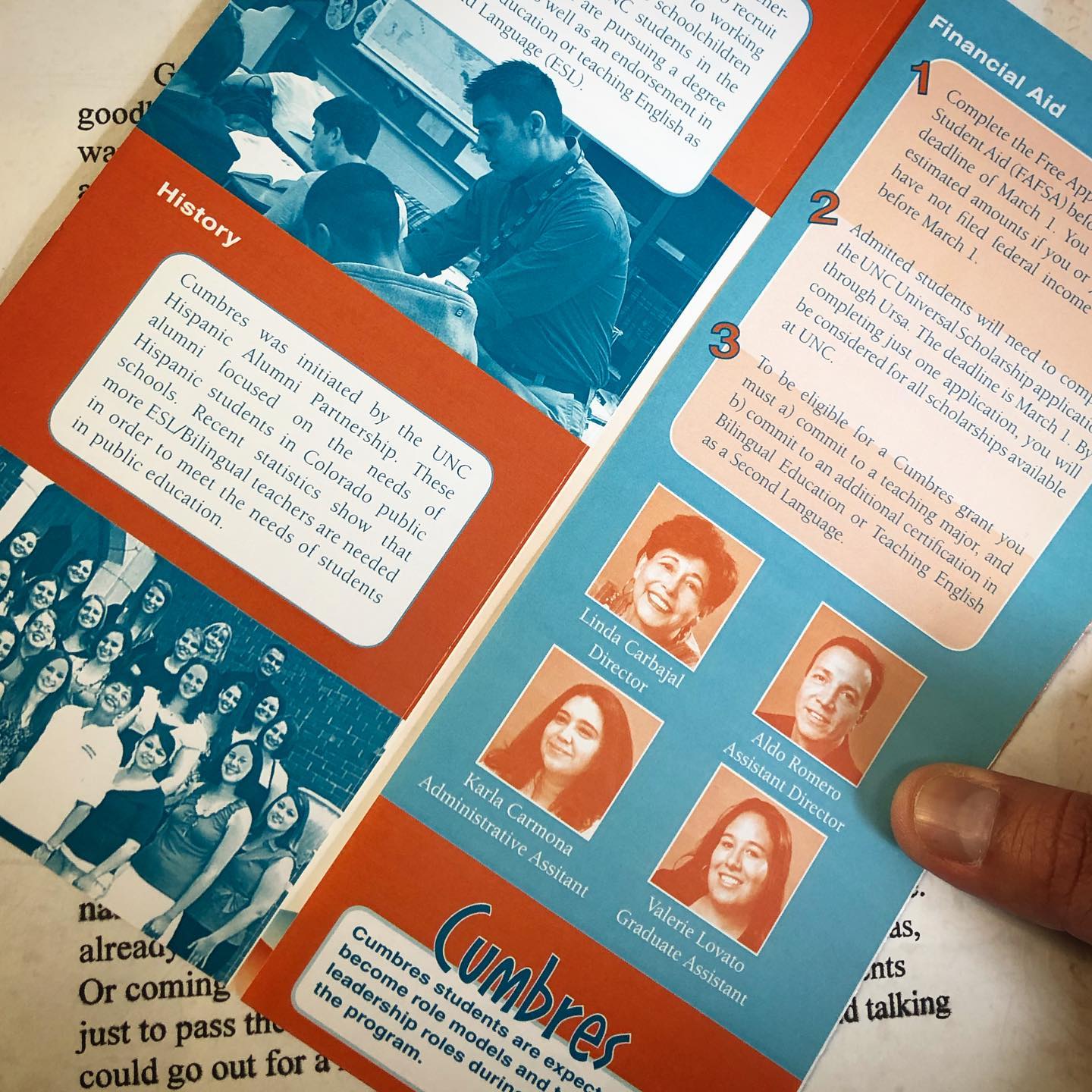
Often, you might hear higher education professionals reference specialized instruction, in-class peer tutoring, and other necessary educational support services as “accommodations.”
Colleges and universities can reframe the conversation surrounding these resources by utilizing asset-based language to better serve students:
Instead of saying “accommodations,” we can cite the power of “resources,” highlighing that any student can access these tools and utilize them without the fear of embarrassment.
For example, many English language learners who enter college might have received verbal and written communication support during their high school experience, support we call “ESL or Culturally and Linguistically Diverse Education.”
Informed by 20+ years of experience and recommendations from UNC’s Graduation and Retention Taskforce, the university has committed to continue this skill development through the creation of the Culturally and Linguistically Diverse Education Lab available through the UNC Center for Global Engagement starting in late-2024. This lab will support students in the same way as an academic writing or math lab, but with the scaffolding needed to effectively serve students who are not English first.
Through academic resources like this, students can find greater personal growth, academic success, and graduate on time.
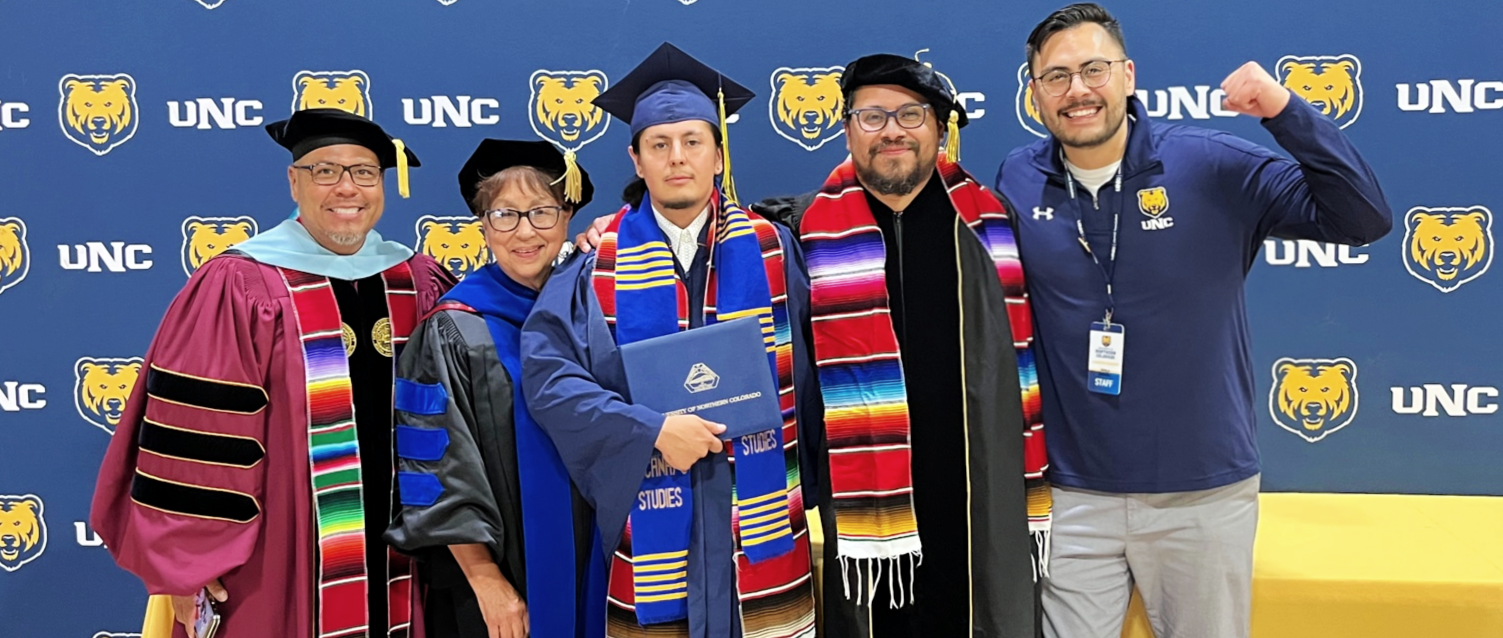
Conclusion
These five strategies are simply a few examples of practices and tactics colleges and universities can utilize to better serve and engage Hispanic and Latino-identifying students and bring life to the missions of our institutions as spaces for student development and academic success.
To close, I’ll share a quick story. This past spring, I visited Greeley West High School as a guest speaker in the sophomore “Advancement Via Individual Determination” or AVID course. As I entered the school, my alma mater, it was visibly apparent that nearly 70% of the students identify as Hispanic or Latino, a marked difference from my time at Greeley West, when only 32% of students had a similar cultural background. As I prepared to speak to them, I saw our future in front of me.
As Joelle Martinez, LLI President & CEO, has said, “Leadership is not by chance. It is by choice.”
Don’t you want to be at the forefront of efforts in higher education to better serve our students? I do.

Above are the Spring 2023 Latinx-identifying graduates who participated in UNC’s LatinXcellence Graduation Reception.
Read More
This article was informed by resources and insight from the following articles and organizations.
- UNC as HSI: A Pathway to Student Success (2020 Report) by Dr. Katrina Rodriguez, UNC
- Becoming Hispanic Serving Institutions and Transforming Hispanic Serving Institutions (Books) by Dr. Gina Garcia
- Defining Servingness at Hispanic Serving Institutions by the American Council on Education
- Examples of Excelencia by Excelencia in Education
- 2023 Hispanic Higher Education and HSIS Facts by the Hispanic Association of Colleges and Universities
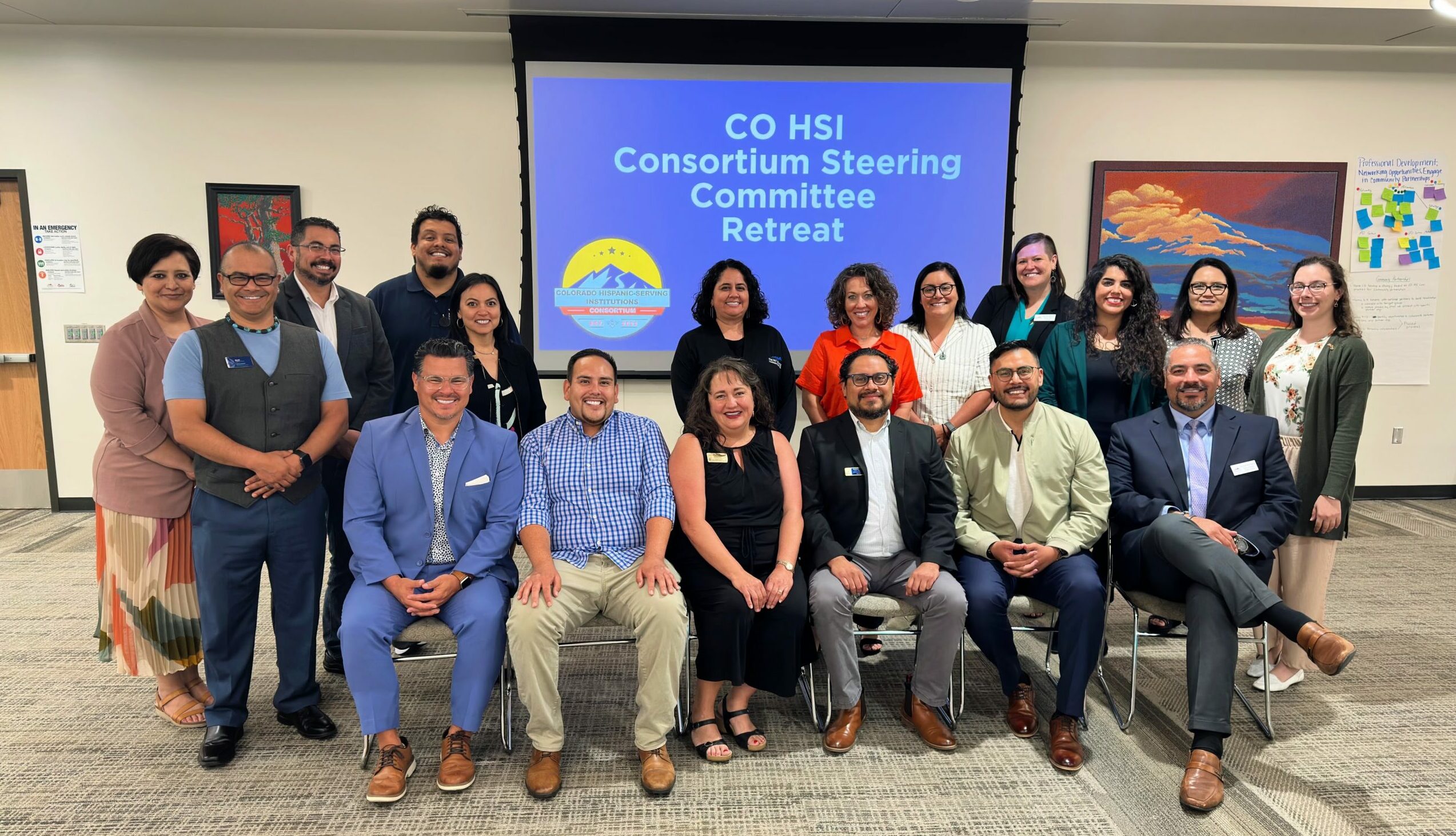
About the Author
Cristóbal (Chris) Garcia is a first-generation college graduate with a master’s degree in business from Colorado State University. Chris currently serves as UNC’s Staff Fellow for Hispanic Serving Institution initiatives and is a member of Colorado’s statewide HSI Consortium. He was recently selected as a Notable Minority Leader in Northern Colorado through BizWest magazine for his advocacy. Chris authors articles on topics such as: leadership, career development, higher education, and Hispanic/Latinx culture.
Chris is a graduate of the Latino Leadership Institute.
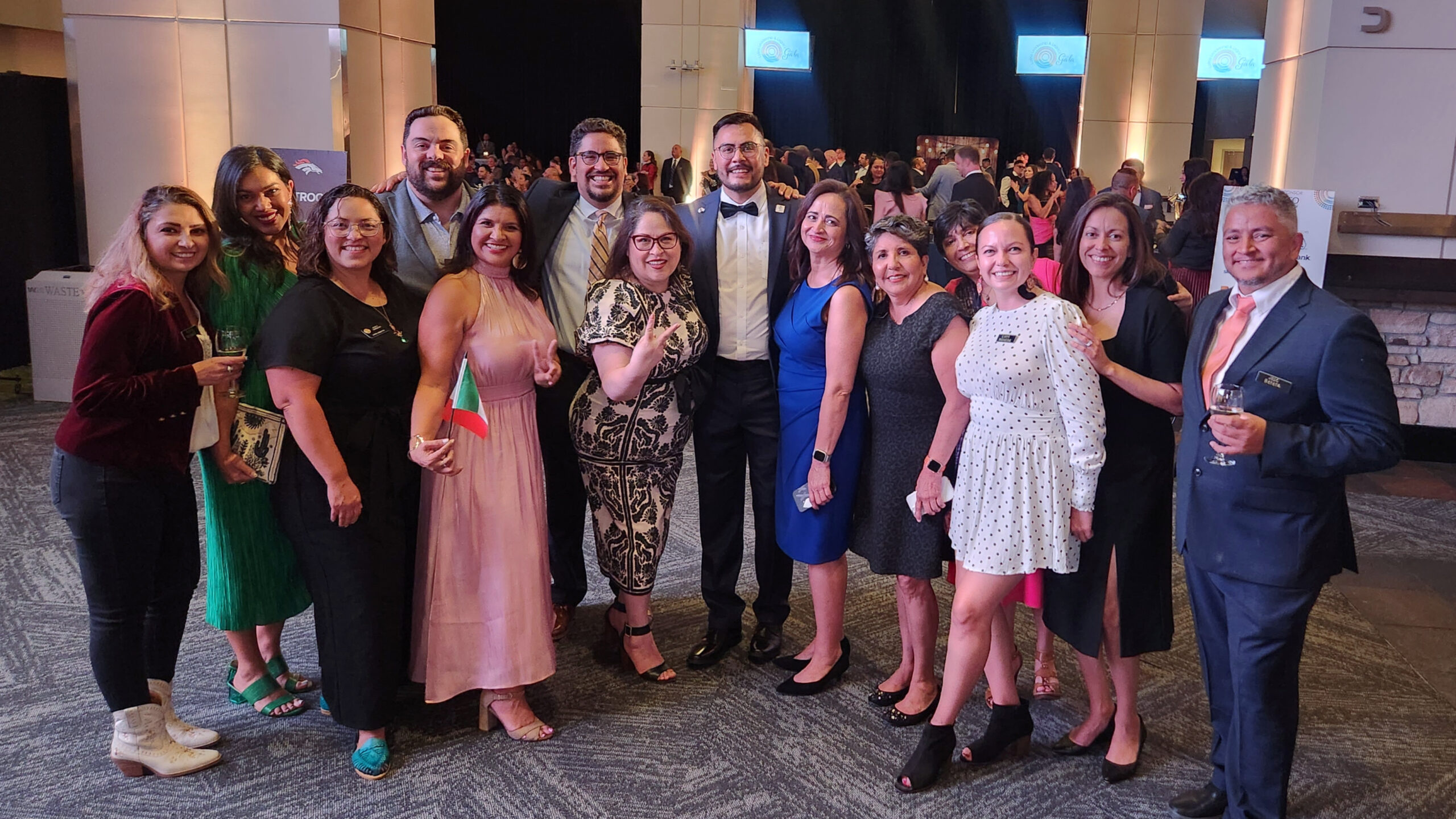
Chris with fellow Latino Leadership Institute Cohort 2 graduates.



